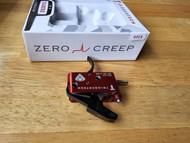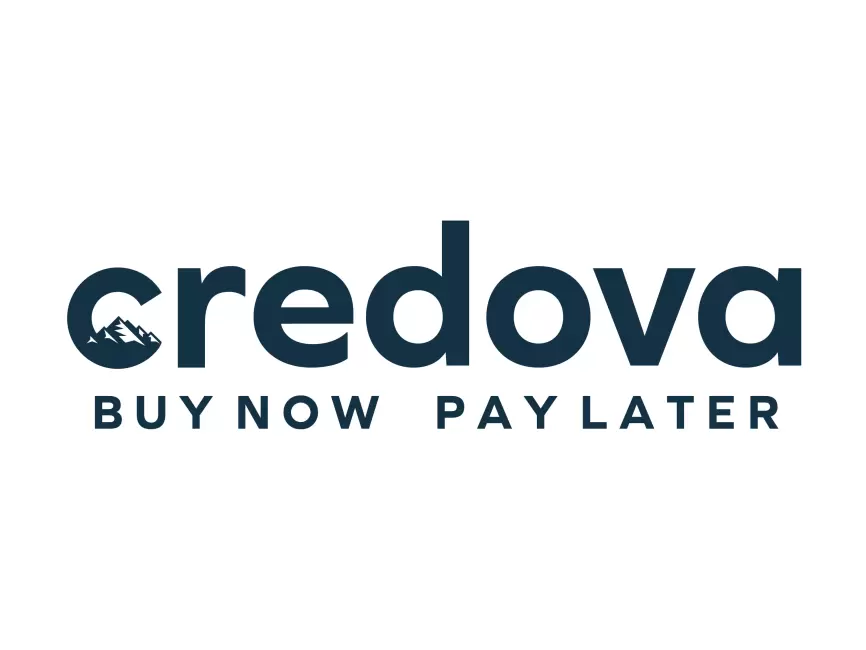Curved Triggers Vs Flat Triggers
Posted by Red Hawk Rifles on Apr 25th 2024
Curved Triggers Vs Flat Triggers
Triggers are one of the aspects of firearms that you can’t escape and there are two major styles: Curved and Flat. Which one you should use comes down to personal preference, but each does have some benefits and deficits that can impact your choice.
We are going to go over some of these aspects of the different types of triggers to see what you might want before you try them. Let’s start with the Curved trigger design.
Curved Triggers
Curved triggers are some of the oldest trigger styles on guns and are prized for both traditional feeling and actual performance.
Pros
The benefits of curved triggers are mostly related to consistency and how commonly they are used.
Ergonomic/Natural Finger Placement
The trigger’s curve helps funnel your finger to an optimal and repeatable location on the trigger. Similarly to how some grips force your hand into a “master grip”, this function of the curved trigger can help you with your performance.
This consistency can help you improve your shooting capabilities by adding less variation to your finger placement which can help you diagnose any issues you may encounter.
Great Trigger Control
Trigger control is very important for precision. Curved triggers give you a guide to the trigger pull. This is achieved by providing more surface contact with the finger, lowering the chances of your finger slipping while keeping the finger centered.
Keeping a firm “grasp” of the trigger helps you to maintain the control over the trigger for those difficult long distance shots.
Works With Most Hands
Curved triggers are more forgiving when it comes to hand and finger size. While they may not be for everyone, curved triggers will work with most people’s hands since there is less guess work for finger placement.
Cons
Like most things firearms related, curved triggers do have some downsides and can be subjective.
Differing Leverage
One aspect that is a drawback to curved triggers is the varying levels of leverage you can experience while using them. Since the trigger is curved, the lever you are pulling will adjust throughout the pull. This leads to the perceived trigger weight changing.
Now this doesn’t matter for most shooters, but it is something to keep in mind if you are hypersensitive to minute variations in your gun. It may not “feel right” to you and this can impact your performance.
Finger Discomfort
This is another subjective drawback to using curved triggers. Everyone is different and the way a curved trigger may interact with their finger can cause unwanted hot spots. This can lead to finger irritation or sores which will discourage the use of this style of trigger.If you don’t have to use a trigger that is uncomfortable to you, you shouldn’t use it.
Flat Triggers
Flat triggers are a newer style of trigger, but are mostly used for their direct linear travel.
Pros
Flat triggers can help with consistency and speed for competitors and other shooters.
Consistency/Smoother Trigger Pull
Flat faced triggers are more consistent in their trigger pull than curved triggers. This is because the lever of the trigger is now straight creating a uniform surface for your finger to interact with. This creates predictability and helps with that straight back pull which helps create better control.
Lower Pull Weight
Flat faced triggers tend to come with lower pull weights. This is because less effort is required to overcome the leverage of the trigger. The lower trigger weight allows for less flinching or jerking of the trigger.
The lower trigger weight combined with the flat face of the trigger allows for faster shots. This is important for those individuals who want to have fast follow up shots or increase their overable speed.
Flat faced triggers are better for competitors since they can help produce tight, precise groups on the clock.
Cons
While they may be fast, flat triggers still are not the right choice for everyone.
Lower Comfort For Larger Hands
Unlike curved triggers, flat triggers can be impacted by the size of your hands. Those with larger hands and fingers can find flat face triggers uncomfortable. This results in differing pressure points and similar irritations with some trigger designs.
This can lead to faster fatigue while shooting and less longevity for your range sessions.
Lower Natural Alignment
Since there is no guiding curve, your finger placement has less natural alignment with a flat faced trigger. This means your hand placement and finger placement need to be well practiced to get the most out of this style of trigger face.
Which Should You Use?
Your experience and training will make the most difference when it comes to trigger style. Some find that there is almost no difference when it comes down to these trigger face styles. Trigger weight and the number of stages they have can be more impactful than whether the trigger is curved or flat.
When it comes down to the actual differences, curved triggers allow for more precise control while flat triggers allow for more speed. If you practice with either you will start to see the results you need to succeed.
You might be wondering what types of triggers you should look into to improve your bolt action rifle. We have a number of curved and flat trigger options like the TriggerTech Special, Bix n’ andy Tac Sport/Sport Pro, and the Elftmann PRecision Rifle Trigger.
Remember your rifle and shooting style should work the best for you, not someone else.








